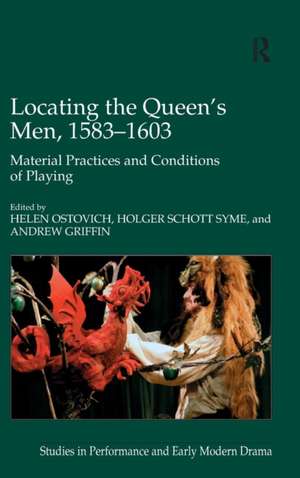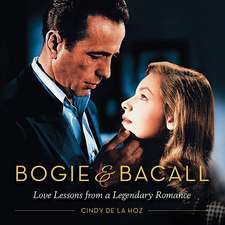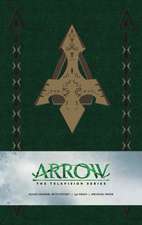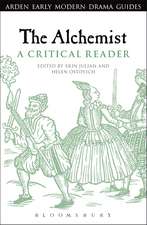Locating the Queen's Men, 1583–1603: Material Practices and Conditions of Playing
Autor Holger Schott Syme Editat de Helen Ostovich Autor Andrew Griffinen Limba Engleză Hardback – 28 mai 2009
Preț: 1117.07 lei
Preț vechi: 1362.29 lei
-18% Nou
Puncte Express: 1676
Preț estimativ în valută:
213.78€ • 222.36$ • 176.49£
213.78€ • 222.36$ • 176.49£
Carte tipărită la comandă
Livrare economică 15-29 aprilie
Preluare comenzi: 021 569.72.76
Specificații
ISBN-13: 9780754666615
ISBN-10: 0754666611
Pagini: 284
Dimensiuni: 156 x 234 x 18 mm
Greutate: 0.68 kg
Ediția:1
Editura: Taylor & Francis
Colecția Routledge
Locul publicării:Oxford, United Kingdom
ISBN-10: 0754666611
Pagini: 284
Dimensiuni: 156 x 234 x 18 mm
Greutate: 0.68 kg
Ediția:1
Editura: Taylor & Francis
Colecția Routledge
Locul publicării:Oxford, United Kingdom
Notă biografică
Helen Ostovich is an Emeritus Professor in the Department of English and Cultural Studies at McMaster University, Canada. Holger Schott Syme is Assistant Professor of English at the University of Toronto, Canada. Andrew Griffin, Assistant Profressor, University of California Santa Barbara, USA
Recenzii
’Locating the Queen’s Men, 1583-1603 is a vital and expansive contribution to repertory studies and serves as a microcosmic representation of current interests in the scholarship of early modern drama.’ Shakespeare 'This volume seeks a better understanding of the dominant adult theatre company in 1580s London, the decade in which Shakespeare began acting and, perhaps, writing. It is a remarkable fusion of archival, historical, and performance-based research: it not only builds from and extends Scott McMillin and Sally-Beth MacLean's The Queen's Men and Their Plays and rethinks the information gathered together in the multivolume and ongoing Records of Early English Drama, but it is also informed by a theatrical experiment in which a group of actors staged Queen's Men plays in repertory on a short tour... This is an incisive collection of essays, and it will be fascinating to see how future scholars and performers will respond.' Journal of British Studies
Cuprins
Introduction, Helen Ostovich, Holger Schott Syme, Griffin Andrew; Part 1 In and Out of London; Chapter 1 On the Road and on the Wagon, Barbara D. Palmer; Chapter 2 The Queen’s Men in Elizabethan Cambridge, Paul Whitfield White; Chapter 3 Motives for Patronage: The Queen’s Men at New Park, October 1588, Lawrence Manley; Chapter 4 London Inns as Playing Venues for the Queen’s Men, David Kathman; Chapter 5 ‘The Curtain is Yours’, Tiffany Stern; Part 2 The Repertory on Page and Stage; Chapter 6 The Start of Something Big, Roslyn L. Knutson; Chapter 7 Page Wit and Puppet-like Wealth: Orality and Print in Three Lords and Three Ladies of London, Ian Munro; Chapter 8 Truth, Poetry, and Report in The True Tragedy of Richard III, Brian Walsh; Chapter 9 The Famous Victories and the 1600 Quarto of Henry V, Richard Dutton; Part 3 Figuring Character; Chapter 10 On-stage Allegory and its Legacy: The Three Ladies of London, Alan C. Dessen; Chapter 11 Usury on the London Stage: Robert Wilson’s Three Ladies of London, Lloyd Edward Kermode; Chapter 12 Appropriations of the Popular Tradition in The Famous Victories of Henry V and The Troublesome Raigne of King John, Karen Oberer; Chapter 13 Male Birth Fantasies and Maternal Monarchs: The Queen’s Men and The Troublesome Raigne of King John, Tara L. Lyons; Part 4 From Script to Stage; Chapter 14 When is the Jig Up – and What is it Up To?, William N. West; Chapter 15 Facial Hair and the Performance of Adult Masculinity on the Early Modern English Stage, Eleanor Rycroft; Chapter 16 Performing the Queen’s Men: A Project in Theatre Historiography, Peter Cockett;
Descriere
Locating the Queen's Men presents new and groundbreaking essays on the theatrical and economic contexts of this prominent acting company. Offering a detailed critical engagement that includes a repertory study and investigations into distinctive style, this collection revises standard accounts of Elizabethan theatre history, showing that the company, which bridged a gap between medieval dramatic traditions and the era of Shakespeare and Marlowe, was a vital force in early modern England.




